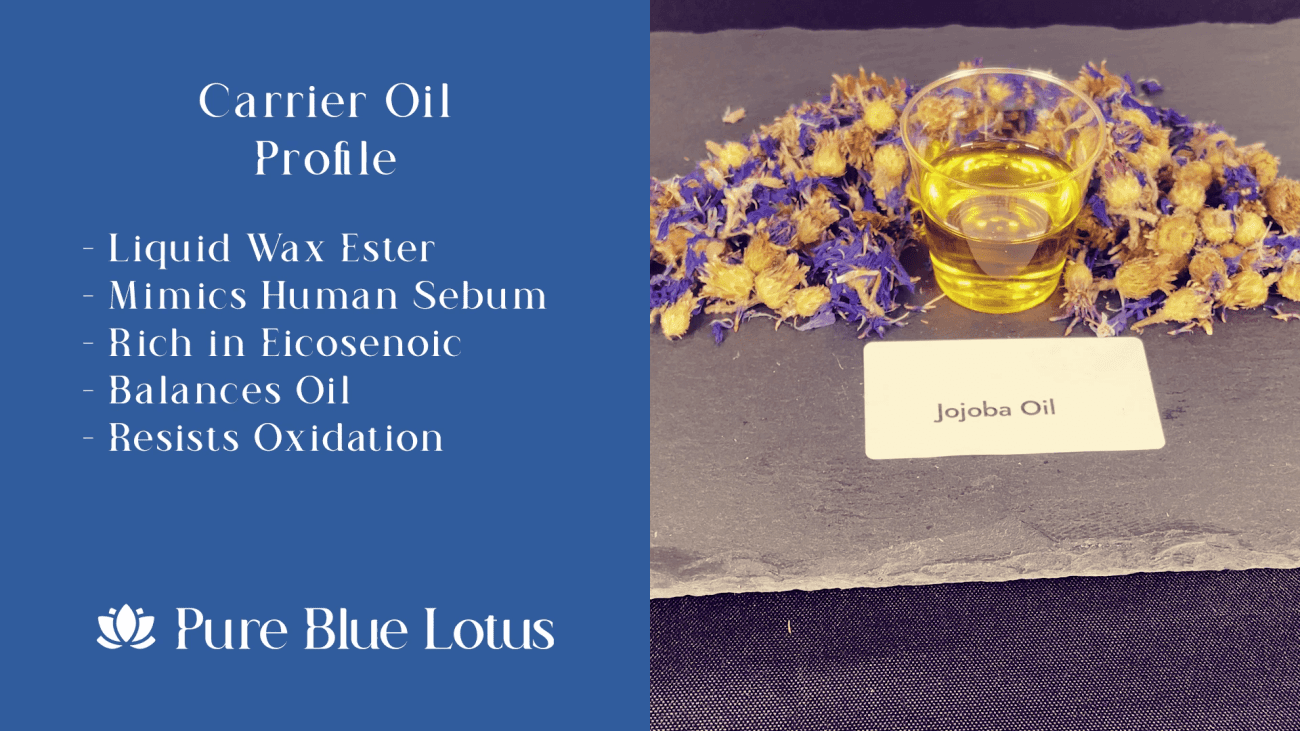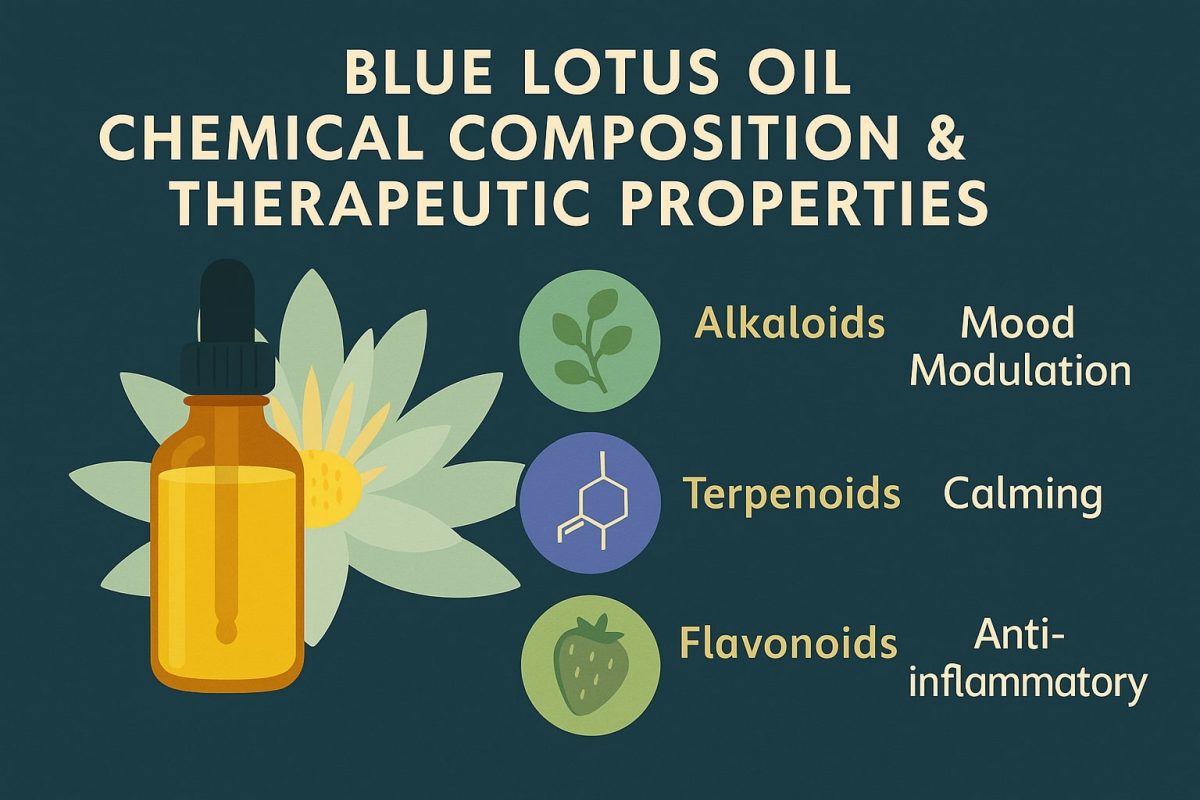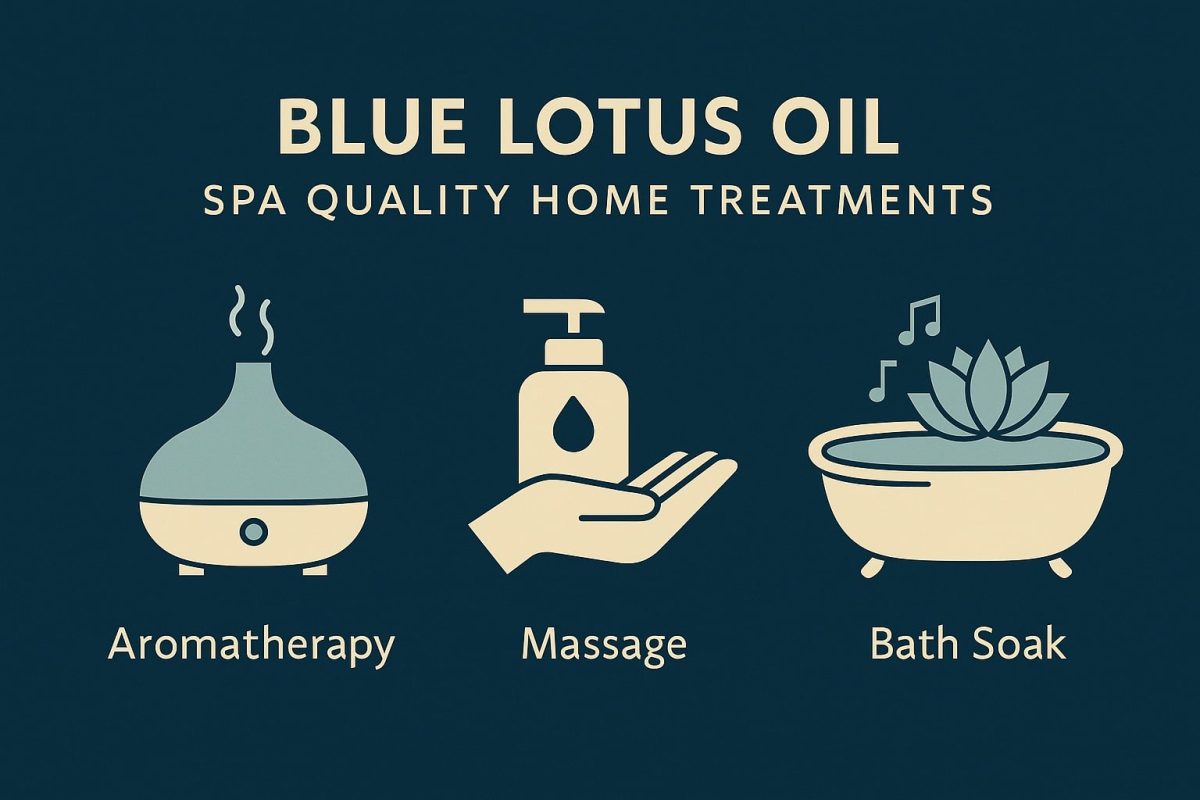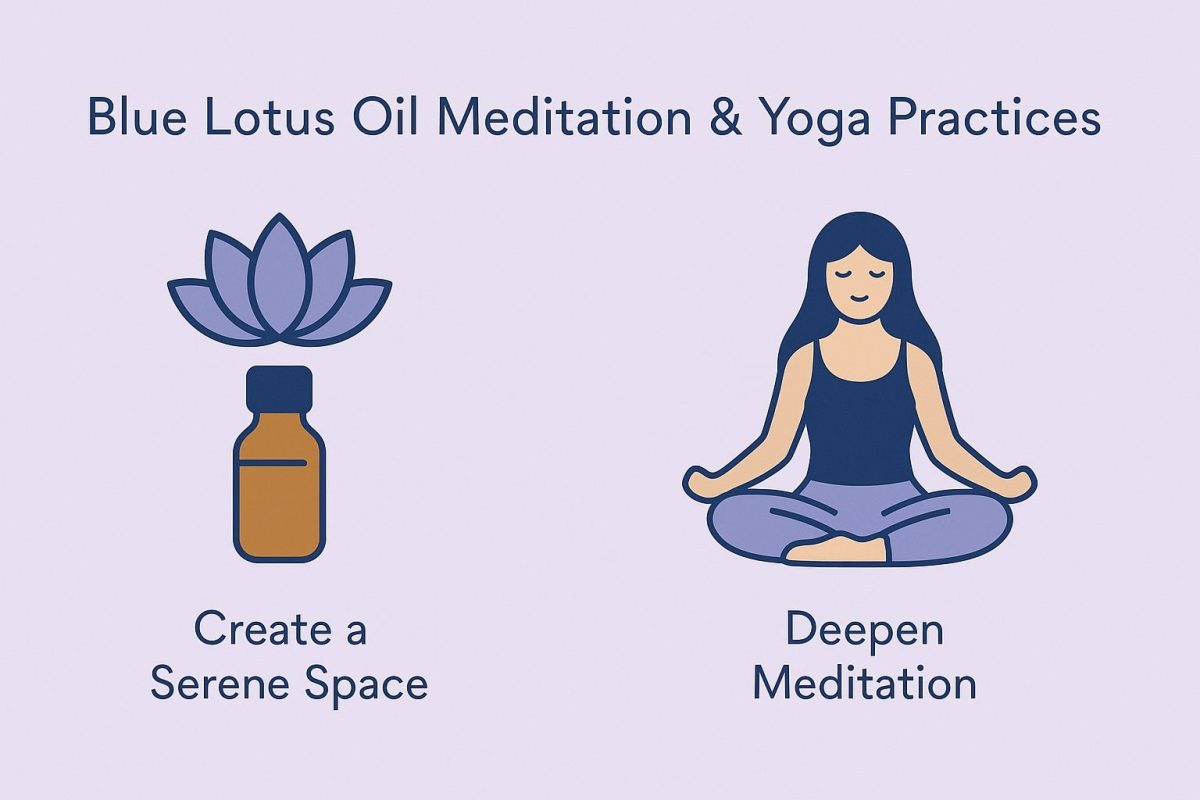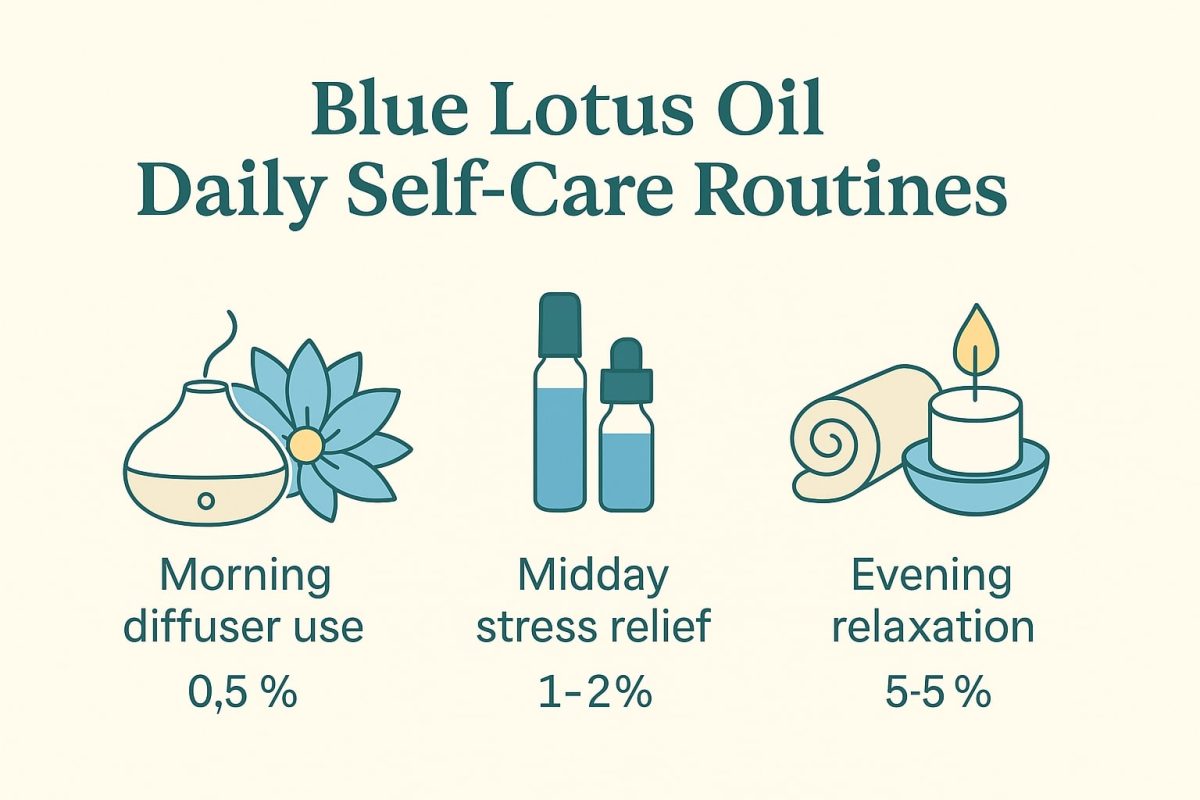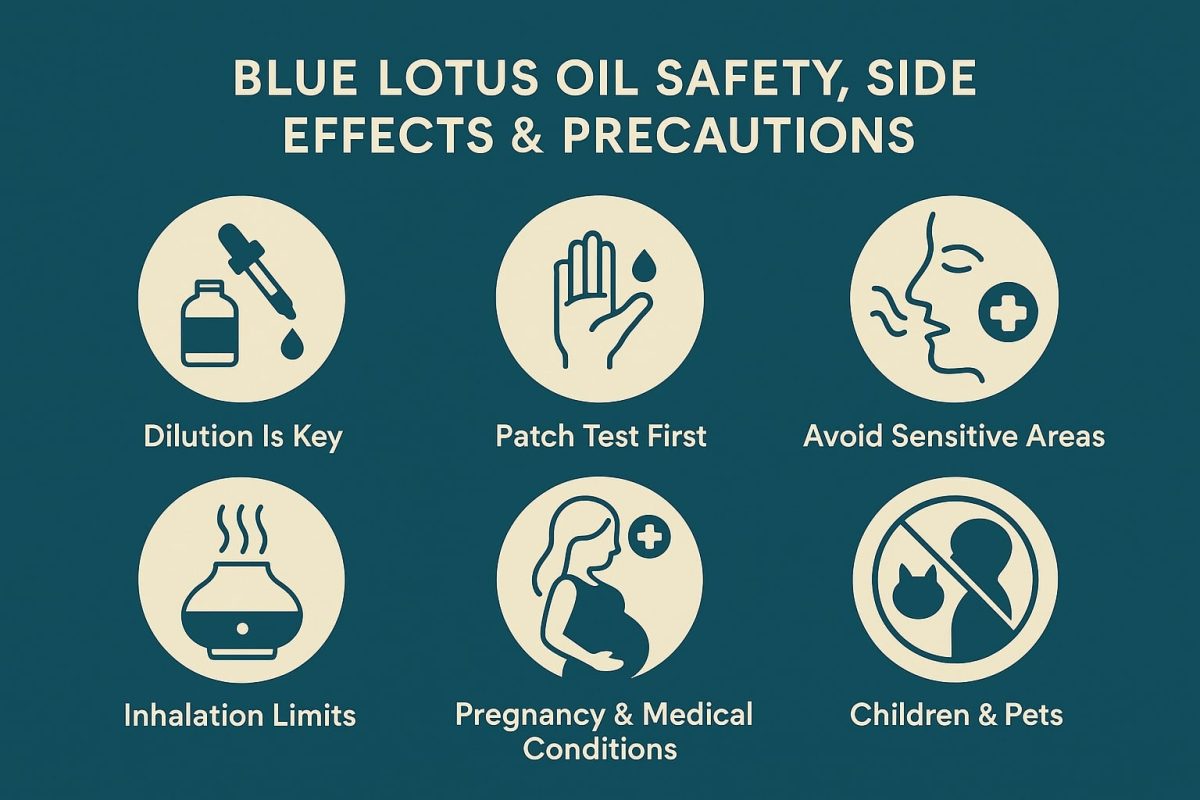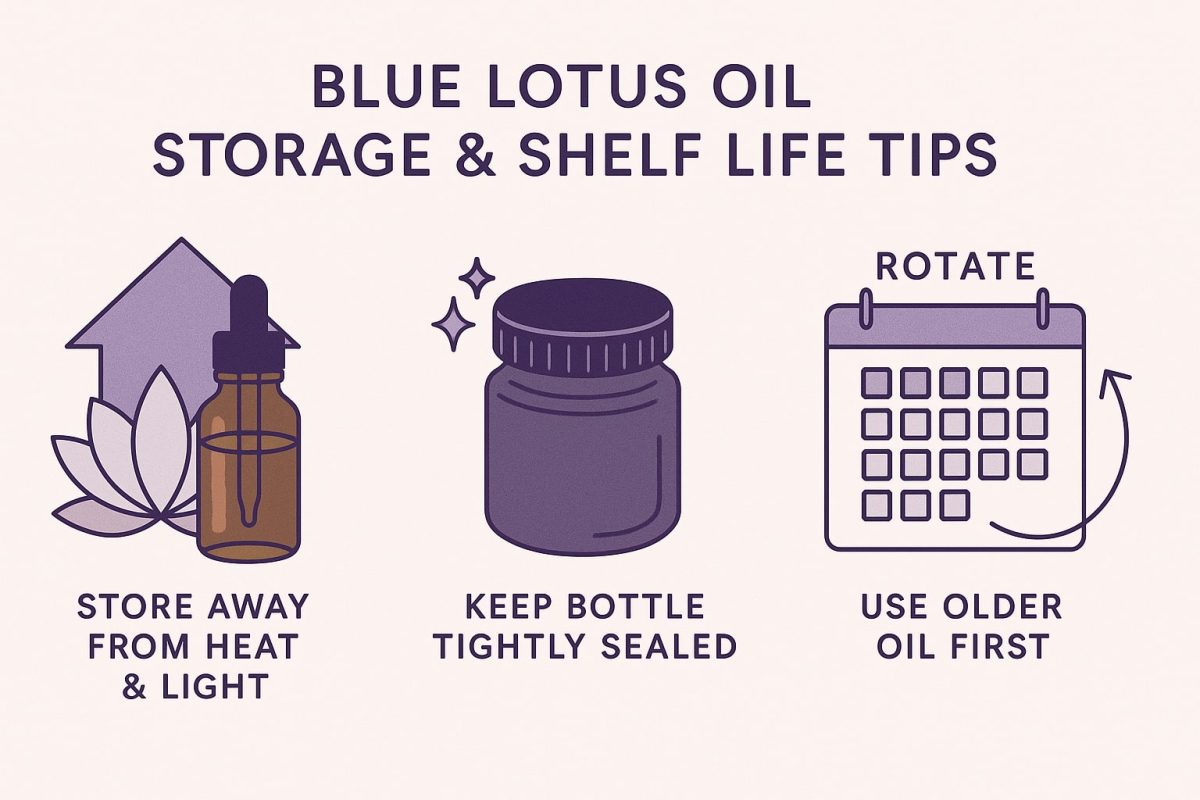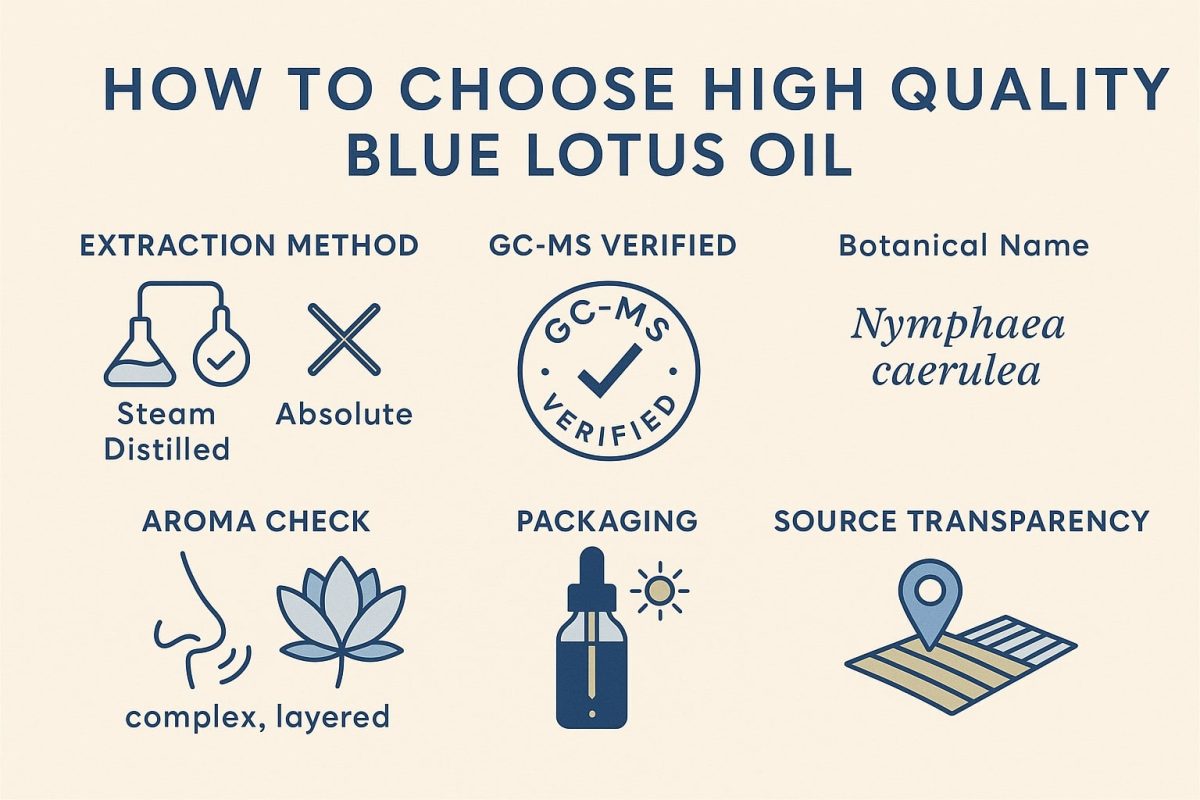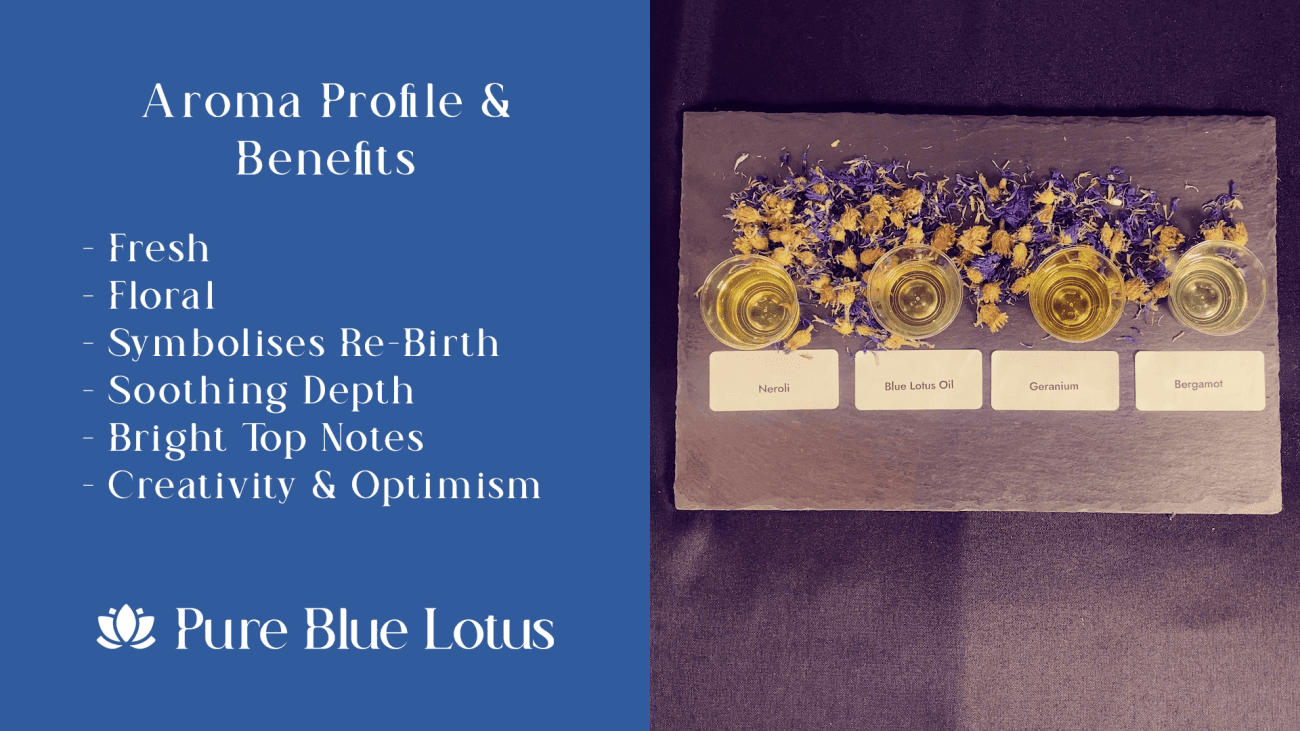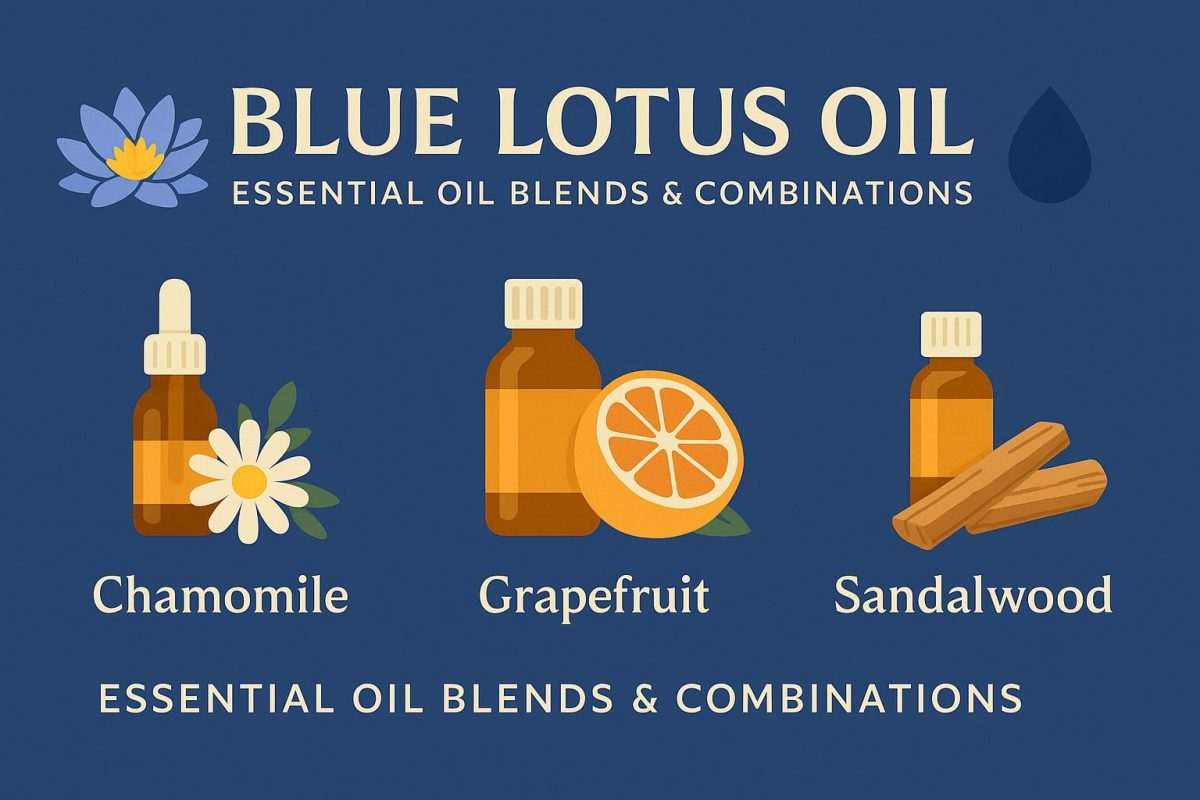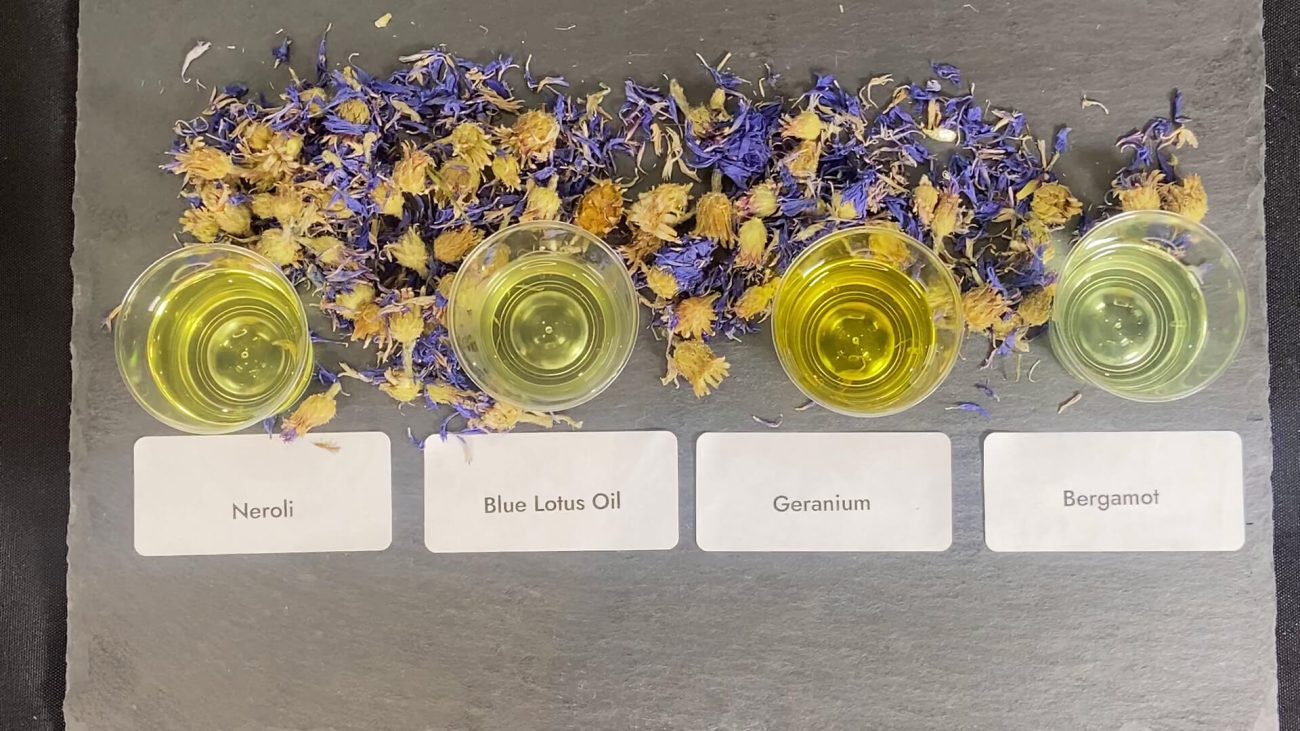How To Use Blue Lotus Essential Oil
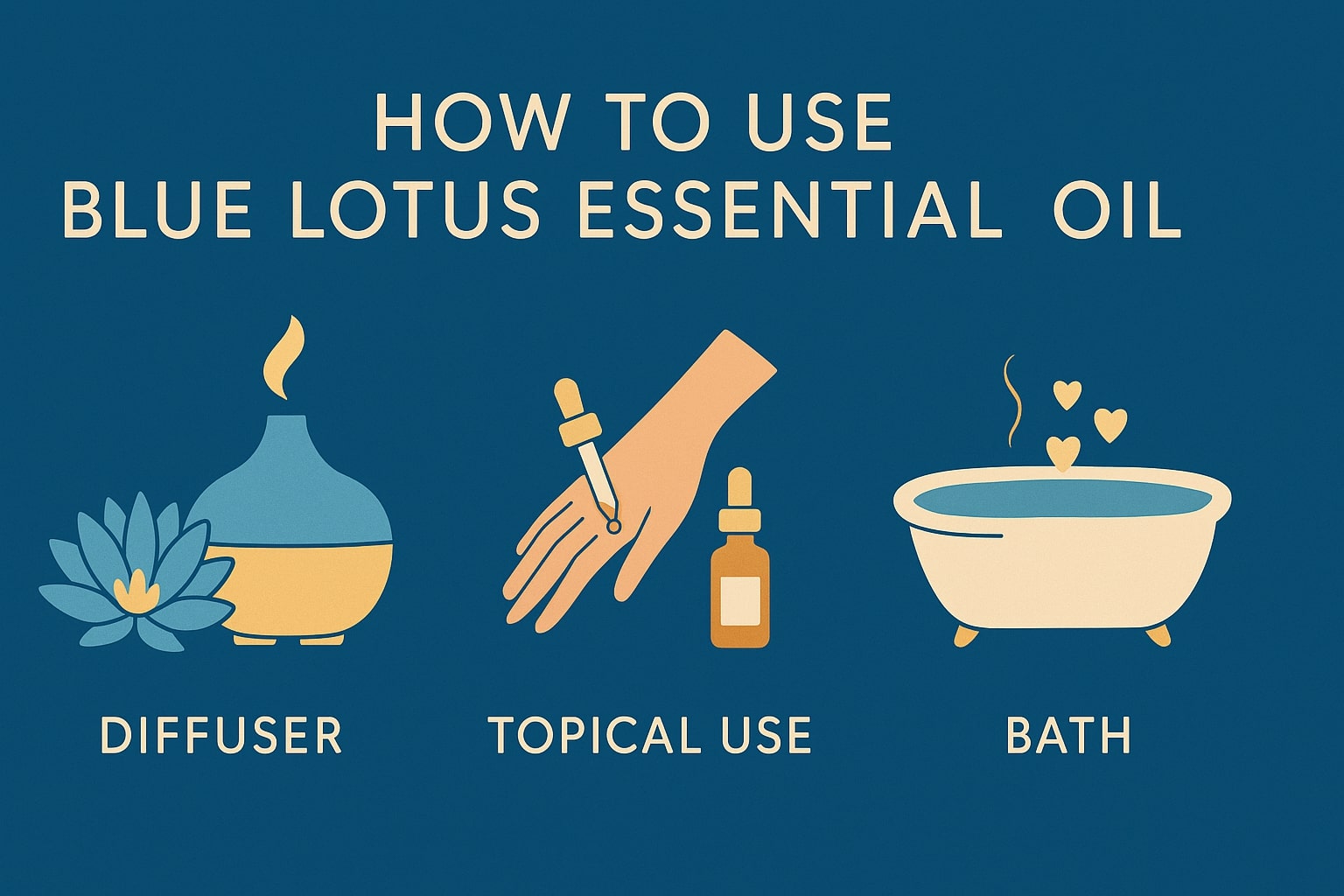
Using blue lotus essential oil can instantly calm your mind, support deeper meditation, soothe skin inflammation, and uplift your mood with its gentle floral aroma. In this guide you will discover the plant’s rich history, chemical profile, evidence‑based benefits, detailed application methods, from diffusion to bath soaks to skincare formulations, DIY recipes, quality criteria, safety recommendations, product recommendations, and answers to common questions, empowering you to integrate this ancient elixir into your everyday life.
For those seeking the finest, the highest quality Blue Lotus Oil, experience our hand-crafted, pure Luxury Egyptian Blue Lotus Oil (Nymphaea Caerulea) for a truly luxurious addition to your wellness routine. Find out more →
Quick Links to Useful Sections
- Origins and Botanical Profile
- Historical and Cultural Significance
- Extraction Methods and Types of Oil
- Chemical Composition and Therapeutic Actions
- Evidence-Based Benefits
- Stress Reduction and Anxiety Relief
- Enhanced Meditation and Focus
- Improved Sleep Quality
- Skin Rejuvenation and Anti‑Inflammation
- Mood Elevation and Creativity
- Aphrodisiac and Intimacy Enhancement
- Application Methods
- Aromatherapy Diffusion
- Personal Inhaler or Aromastick
- Topical Massage Blend
- Bath Soak Ritual
- Facial and Body Serum
- DIY Blending and Recipes
- Quality and Sourcing Criteria
- Safety Guidelines and Precautions
- Product Recommendations and Pricing
- Frequently Asked Questions
Origins and Botanical Profile
Blue lotus (Nymphaea caerulea) is a water lily native to the Nile River Basin, East Africa, and parts of Southeast Asia. Revered by ancient Egyptians as a symbol of creation and rebirth, its striking cerulean petals open at dawn and close by midday. Modern botanists classify it in the family Nymphaeaceae. The flower contains unique alkaloids, flavonoids, and terpenes responsible for its mild psychoactive and therapeutic properties.
Historical and Cultural Significance
Archaeological evidence dates blue lotus use back to 2500 BCE. Temple reliefs and funerary art depict priests and pharaohs inhaling its fragrance or steeping petals in wine. Egyptians believed it facilitated communion with deities and guided souls through the afterlife. Greek and Roman travelers documented lotus baths for relaxation and mood enhancement. Ayurvedic practitioners later adopted lotus infusions to balance the doshas, while Tibetan monks valued it for meditation support.
Commission your made-to-order bottle of pure, undiluted Egyptian Blue Lotus Oil (Nymphaea Caerulea)
Commission your made-to-order bottle of pure, undiluted Egyptian Blue Lotus Oil (Nymphaea Caerulea)
Extraction Methods and Types of Oil
Blue lotus essential oil is produced primarily via:
- Steam distillation of fresh or partially dried petals, yields a light floral oil rich in monoterpenes but may lose heavier alkaloids.
- CO₂ supercritical extraction, captures a full spectrum of volatile and semi‑volatile compounds, preserving both aroma and active alkaloids without solvent residue.
- Solvent extraction, produces an absolute that retains potent fragrance and alkaloid content but must undergo purification to remove any residual solvent traces.
CO₂ extracts and absolutes are preferred for therapeutic use, as they deliver the complete phytochemical profile.
Chemical Composition and Therapeutic Actions
- Alkaloids (apomorphine, nuciferine): modulate dopamine pathways for mood elevation and mild euphoria.
- Flavonoids (quercetin, kaempferol): offer antioxidant, anti‑inflammatory, and neuroprotective effects.
- Terpenes (linalool, limonene): provide anxiolytic, antimicrobial, and anti‑spasmodic benefits.
- Fatty acids & waxes: support skin barrier repair and deliver lipophilic actives.
The synergy of these compounds underlies the oil’s relaxation, skin‑soothing, and mind‑uplifting actions when inhaled or applied topically.
Evidence-Based Benefits
Stress Reduction and Anxiety Relief
Clinical studies show that inhalation of blue lotus aroma reduces heart rate and cortisol levels, promoting a relaxed state within 5–10 minutes. Diffusing the oil or using it in a personal inhaler can help manage situational anxiety and racing thoughts.
Enhanced Meditation and Focus
Research indicates that blue lotus compounds increase alpha brain wave activity, associated with relaxed alertness. Applying a drop to pulse points before meditation can deepen focus and prolong session duration.
Improved Sleep Quality
Pilot trials reveal that nightly inhalation of blue lotus extract shortens sleep onset latency by up to 30 percent and increases total sleep time in individuals with mild insomnia, without morning grogginess.
Skin Rejuvenation and Anti‑Inflammation
Topical application of blue lotus oil in carrier blends accelerates wound healing, reduces redness, and improves hydration. Antioxidants and fatty acids support collagen synthesis and barrier repair, making it effective for aging, eczema, and psoriasis.
Mood Elevation and Creativity
Users report boosted mood and creative inspiration after low‑dose inhalation, thanks to mild dopaminergic activity from apomorphine derivatives. It’s a popular pre‑work ritual for artists and writers seeking focused flow states.
Aphrodisiac and Intimacy Enhancement
Historically used as a love potion, blue lotus oil’s aroma can reduce social inhibition and foster emotional connection. A few inhalations or a massage blend before an intimate evening can heighten desire and closeness.
Application Methods
Aromatherapy Diffusion
Use 3–5 drops of blue lotus oil in an ultrasonic diffuser or aroma lamp filled with water. Diffuse for 30–60 minutes in bedrooms, living rooms, or meditation spaces to create a serene, uplifting atmosphere.
Personal Inhaler or Aromastick
Fill a portable inhaler stick with a cotton wick soaked in 5–10 drops of blue lotus oil. Inhale deeply as needed for immediate calm and focus during travel, work breaks, or stressful moments.
Topical Massage Blend
Create a soothing massage oil:
- Blend 10 ml of sweet almond or jojoba oil with 5 drops of blue lotus oil.
- Warm between palms and apply to temples, neck, shoulders, or tired feet.
- Use long, gliding strokes to promote circulation and release muscle tension.
Bath Soak Ritual
Add 8–10 drops of blue lotus oil to a warm bath. For enhanced benefits, mix with:
- ½ cup Epsom salts to relieve muscle soreness
- ¼ cup baking soda to soften water and skin
- 5 drops lavender oil for additional calm
Soak for 20–30 minutes while practicing deep breathing or guided meditation.
Facial and Body Serum
Enhance your skincare routine by adding 2–3 drops of blue lotus oil to:
- Your morning or evening serum
- Undiluted moisturizer or aloe vera gel
Gently press into clean skin using upward strokes. Ideal for dry patches, redness, or fine lines.
DIY Blending and Recipes
Calming Roller Blend
- 5 ml fractionated coconut oil
- 3 drops blue lotus oil
- 2 drops chamomile essential oil
Fill a 5 ml roller bottle with the carrier oil, add essential oils, shake, and apply to pulse points for on‑the‑go relaxation.
Mindful Meditation Mist
- 50 ml distilled water
- 5 ml witch hazel or vodka
- 10 drops blue lotus oil
- 5 drops frankincense oil
Combine in a 100 ml spray bottle, shake well, and mist around your meditation space before practice to anchor presence.
Rejuvenating Hair Oil
- 15 ml argan oil
- 5 ml blue lotus oil
- 3 drops rosemary essential oil
Massage into scalp and hair lengths, wrap in warm towel, leave on for 30 minutes, then shampoo. Promotes shine and scalp health.
Quality and Sourcing Criteria
- Certified organic or wild‑crafted blue lotus petals
- CO₂ supercritical or steam‑distilled extraction without solvents
- Third‑party GC‑MS testing to verify alkaloid and terpene profiles and absence of contaminants
- Opaque, UV‑protective packaging to preserve volatile compounds
- Sustainable harvest practices that protect wild populations
Choose reputable brands that provide full transparency on origin, extraction, and lab reports.
Safety Guidelines and Precautions
- Perform a patch test: apply a diluted drop on inner forearm, wait 24 hours for reaction.
- Dilute at 1–5 percent in carrier oil for topical use; pure oil may irritate sensitive skin.
- Avoid contact with eyes, inner ears, and mucous membranes.
- Consult a healthcare professional if pregnant, nursing, or taking medications affecting neurotransmitters.
- Start with low doses; wait 5–10 minutes between inhalations or topical applications.
- Store oil in a cool, dark place away from sunlight and heat sources.
Product Recommendations and Pricing
Typical retail prices for high‑quality blue lotus essential oil:
- 5 ml steam-distilled bottle: €20–30 / $22–35
- 5 ml CO₂ extract bottle: €35–50 / $40–60
- 10 ml absolute: €60–80 / $70–90
Subscription plans and refill pouches can reduce per‑ml cost by 10–25 percent. Look for value bundles that include roller blends or bath ritual kits.
Frequently Asked Questions
How should I store blue lotus essential oil?
Keep the bottle tightly closed in a cool, dark cabinet or drawer. Avoid exposure to heat and direct sunlight to prevent oxidation.
Can I ingest blue lotus essential oil?
Internal use is not recommended unless under guidance from a qualified aromatherapist or medical professional. Oral ingestion can risk toxicity and interactions.
How many drops should I use in a diffuser?
Begin with 3–5 drops in 100–200 ml of water for ultrasonic diffusers. Adjust up to 7–10 drops based on room size and personal sensitivity.
Is blue lotus oil psychoactive?
It contains mild alkaloids that can produce subtle relaxation and euphoria, but effects are gentle and well suited to wellness rituals, not strong psychoactive experiences.
Can I mix blue lotus oil with other essential oils?
Yes, blue lotus blends beautifully with lavender, chamomile, frankincense, sandalwood, and citrus oils. Keep total essential oil concentration below 5 percent in carrier blends for topical applications.
Where can I buy authentic blue lotus essential oil?
Purchase from reputable natural wellness retailers, certified organic aromatherapy brands, or online platforms that provide GC‑MS reports, origin transparency, and customer reviews.
For those seeking the finest, the highest quality Blue Lotus Oil, experience our hand-crafted, pure Luxury Egyptian Blue Lotus Oil (Nymphaea Caerulea) for a truly luxurious addition to your wellness routine. Find out more →

